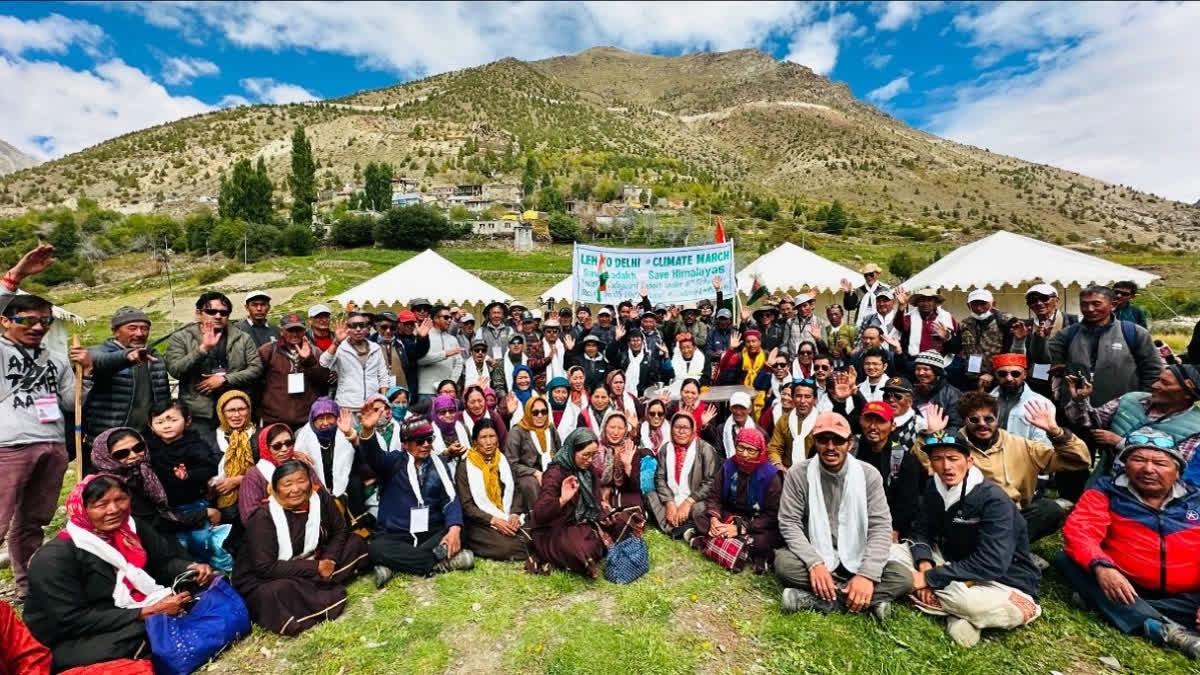Leh: The month-long 'Delhi Chalo Pad Yatra', a massive movement aimed at bringing attention to the demands of the people of Ladakh, led by environmentalist and educationist, Sonam Wangchuk and supported by Leh Apex Body and KDA is entering in Delhi. The peaceful march which was started from Leh on September 1 has become part of a larger national campaign to draw the Centre's attention to the region's growing concerns.
The main objective of the 'padyatra' is to support the four-point agenda which includes statehood for Ladakh, inclusion in the Sixth Schedule, an additional Lok Sabha seat, and addressing unemployment in the Union Territory. Each day they have covered 25 km. Today marks the 30th day and they are heading towards Delhi. As of now, they have covered over 730 km. Besides, a total of 12 members of KDA joined on September 29 in Chandigarh.
Deldan Namgyal, Former MLA Nubra says, "The padyatra is on the four-point agenda including statehood for Ladakh, inclusion of Ladakh in Sixth Schedule, two Lok Sabha seat one each for Leh and Kargil, separate PSC for Ladakh. Before the abrogation of Article 370, there used to be four MLAs and two MLCs who represented Ladakh in the Assembly and had law-making power. Also, under the LAHDC Act 1997, only the CEO/Deputy Commissioner came under the ambit of the LAHDCs. After it became a Union Territory, we had many directors above the Chairman/DC, commissioner secretaries, Advisors, and then Lieutenant Governor and the LAHDC Act has become more weakened."
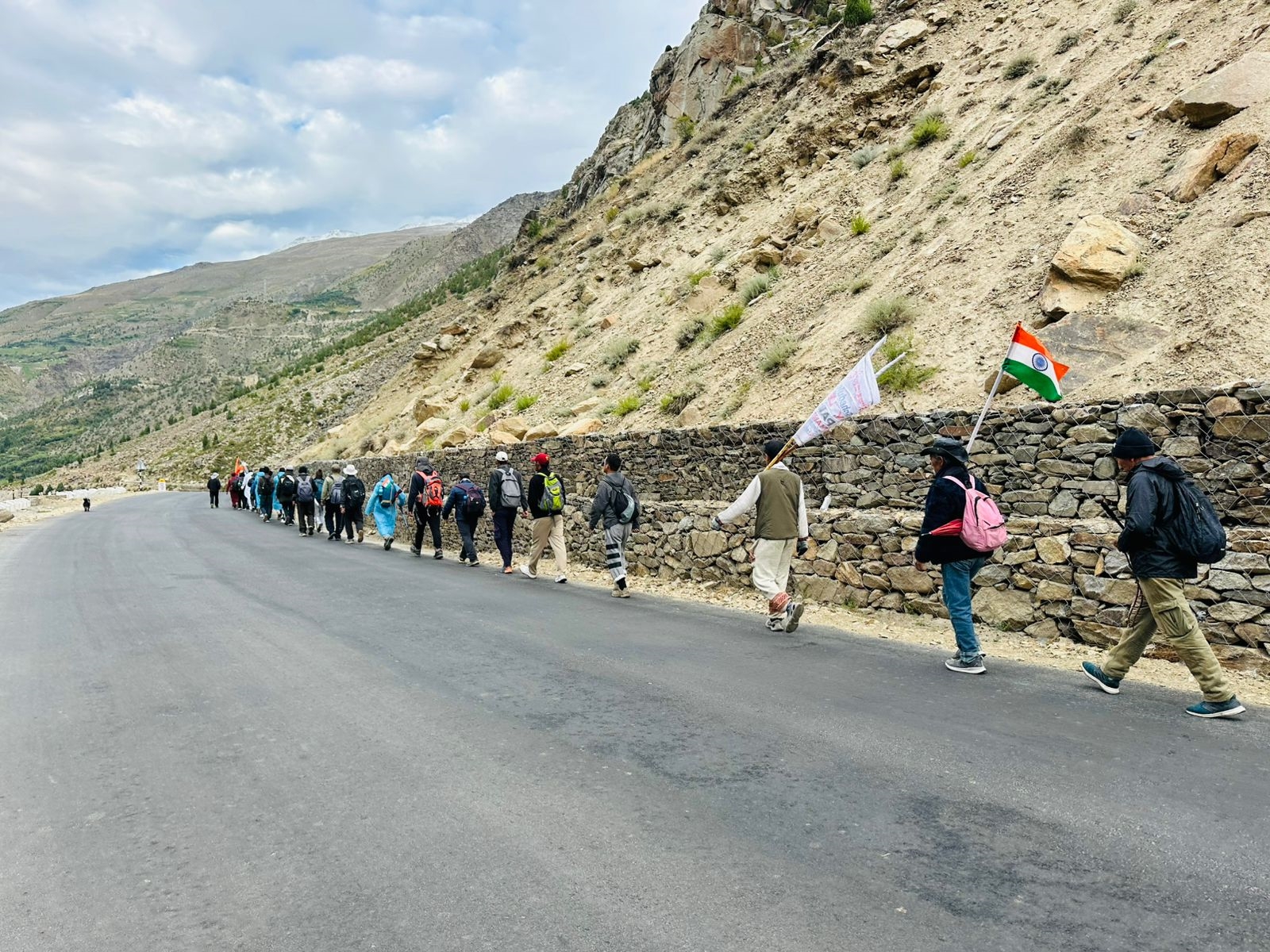
"Now Ladakh is demanding either statehood or a sixth schedule with Autonomous Development Councils. First, we have to be declared as a tribal area although we are already tribal as 97 per cent of our population is tribal. To my belief, we are demanding the Sixth Schedule with ADCs having constitutional and law-making power on various locally relevant subjects," he said.
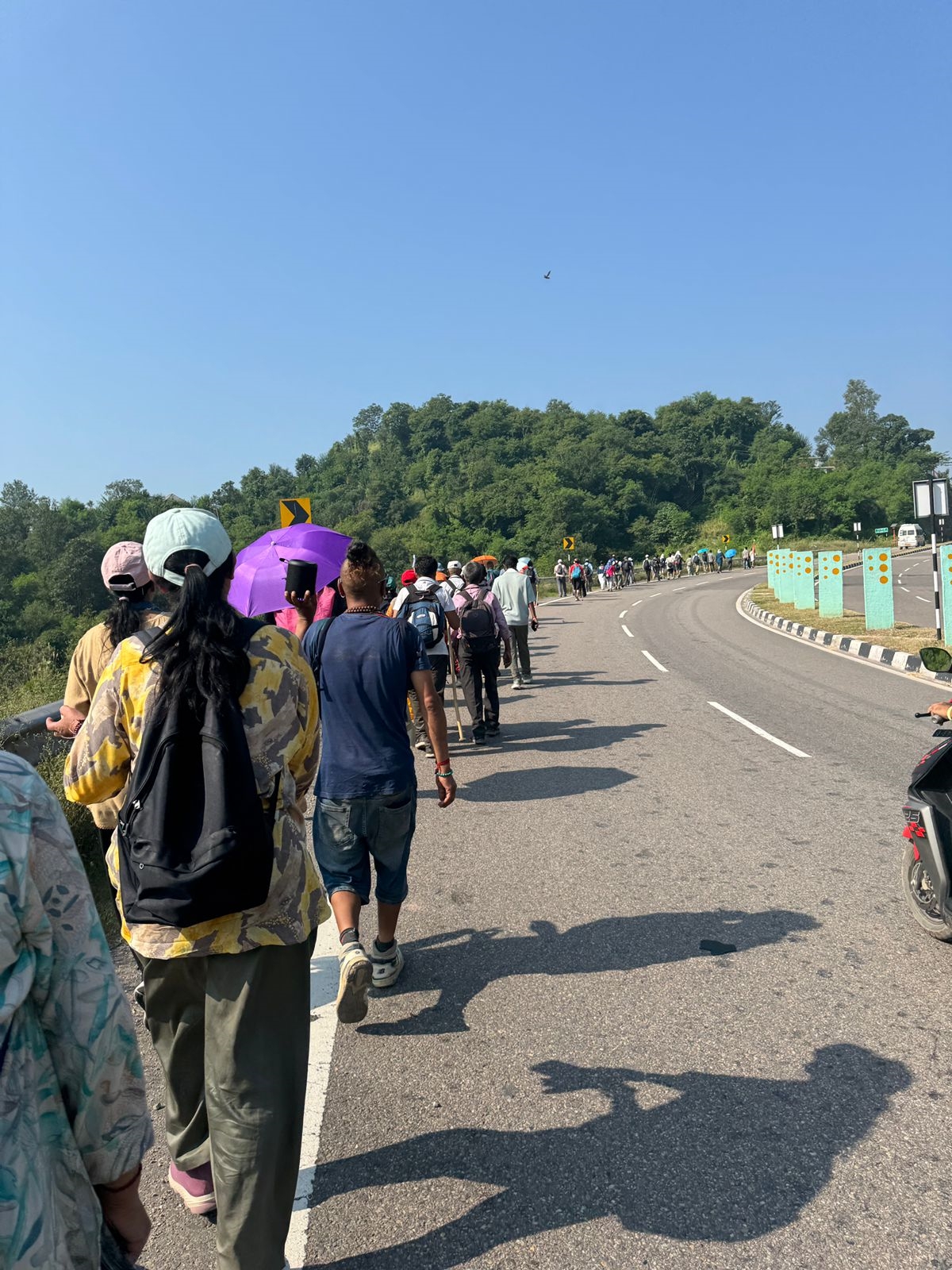
"The second option is if the government of India announces statehood for Ladakh, then obviously we will have an Assembly and MLAs will be there, which means we will have our say in the planning processes including protection of land, job, environment in the assembly whereas at present LAHDC Act 1997 cannot enact law."
Jigmet Paljor, Apex Body Coordinator/ Padyatra Coordinator says, "Today is the 30th day and people have joined from far away areas. We have covered almost 730 km in which we have crossed many passes. The people faced many issues such as breathing problems, blisters, back pain, and dehydration but we never gave up and undertook the Padyatra with dedication. People have joined us sacrificing their joy of being at home for the cause of Ladakh. There were small issues but we continued our journey and are heading towards Delhi today."
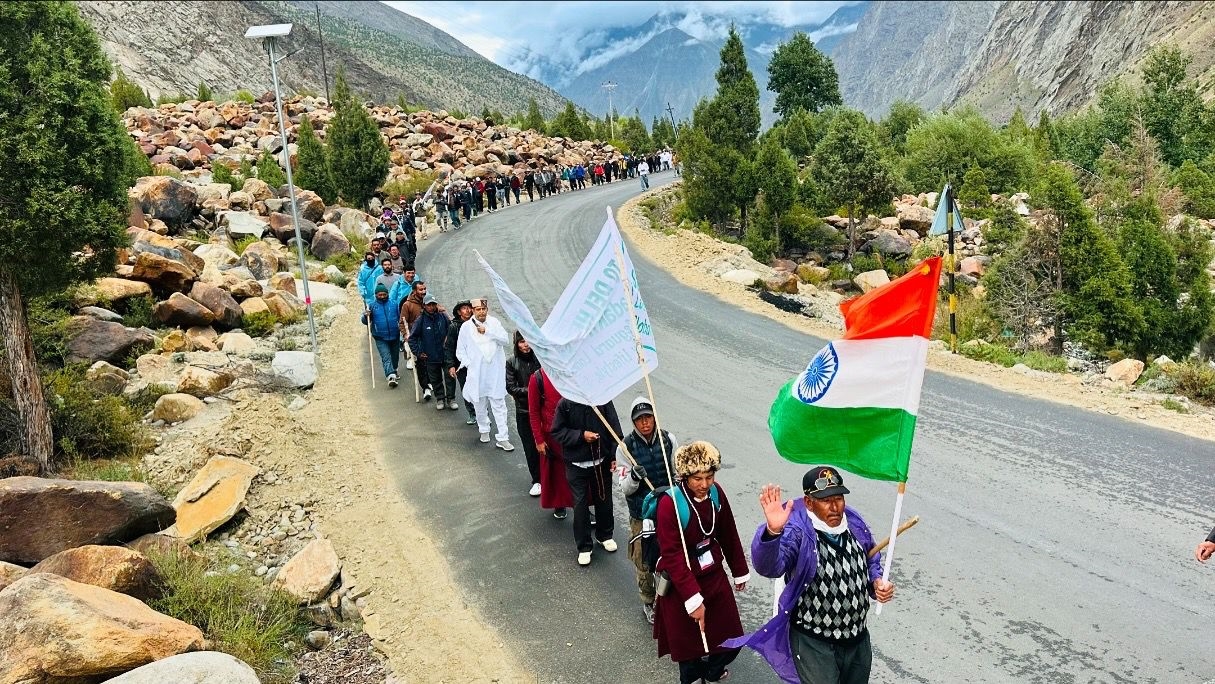
He said, "The main objective of the Padyatra is to support the four-point agenda. We have been having talks with the government which should resume as soon as possible and find a solution for our demand. Secondly, Sonam Wangchuk who is an environmentalist and leading the padyatra, alongside supporting the 4-point agenda, sends out a message to the world that the environment and the tribal community should be safeguarded and requests people to lead their lives in a simple and eco-friendly way."
Expressing his expectation from the government he says, "People have come here with a lot of difficulties without causing any inconvenience to anyone peacefully. Our expectation from the Government is to resume the talk at the earliest. And this should get the attention of the Government."
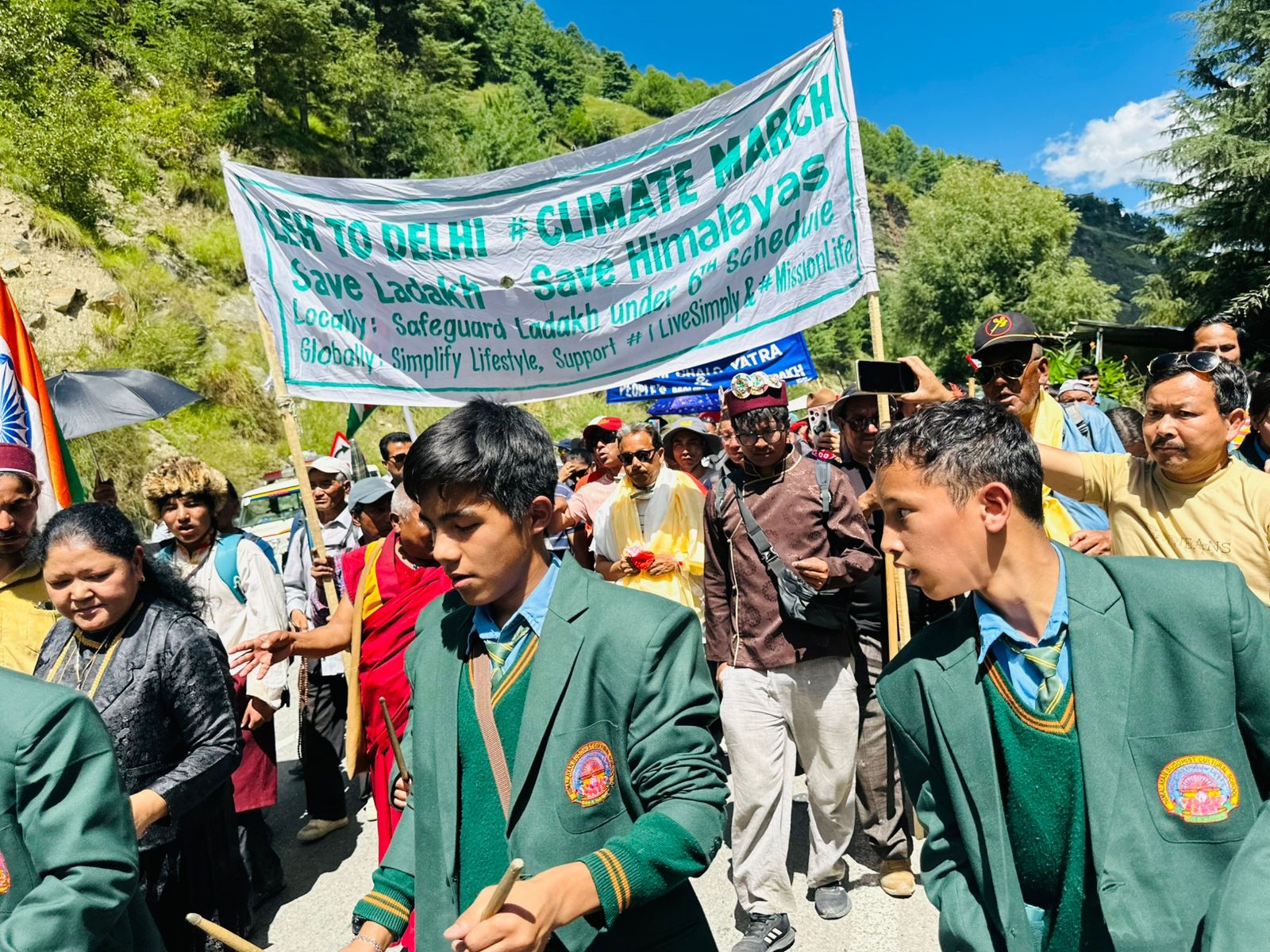
Mehdi Shah, a member of Apex Body Leh, "The month-long journey started from Leh on September 1 on the four-point agenda. There were a lot of challenges during the yatra but we have prepared ourselves. Initial 10 days we were in Ladakh itself where we crossed 3-4 passes with heights varying from 15,000 to 16,000 above sea level."
"Then on the 11th day, we entered into Himachal. Our yatris mainly comprised of people in the age group of 79, 55, 57. Altitude sickness and headaches were common issues but we have managed them ourselves. Today we are entering Delhi. The lowest temperature was minus 6 and the highest temperature was from 37 to 40 degrees Celcius," Shah said.
"Due to the extreme heat, people are facing the issue of dehydration, and headache, even after that we are heading forward. We have received a lot of support and love from the people of Himachal especially from Darcha, Bilaspur to Chandigarh. In many places, people have arranged food for all the yatris. The Himachal government has also provided us with an ambulance and police security while on the other hand, the UT administration of Ladakh has neither provided an ambulance nor any security. After reaching Delhi, we will go to Rajghat and the concluding the yatra at Jantar Mantar on the occasion of Gandhi Jayanti on October 2," Shah said.
Read More
